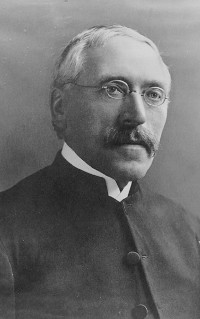Levi Curtis (1858-1942)
Levi Curtis was born in Blackhead, N.L. He was educated at the Methodist college in St. John's and later attended Mount Allison University, where he graduated as valedictorian of his class.

Although invited to join the faculty at Mount Allison after graduation, Curtis chose instead to be ordained. He served in Bay Roberts, Grand Bank, Twillingate and St. John's. Then in 1889 he agreed to become the Methodist superintendent of Education.
Curtis was one of the people most responsible for the establishment of the Normal School, which later moved to the Parade Street campus. With Solomon Whiteway as principal, the school trained many of Newfoundland's future teachers.
When Memorial University College needed a president, the trustees set their sights on John Lewis Paton, who was on a speaking tour of Canada at that time. It was Curtis who travelled more than 4,000 kilometres, more than halfway across the continent, to find him. In Winnipeg, Manitoba, presumably in a hotel room, Curtis convinced Paton to become the first president of Memorial University College.
A bronze bust of Levi Curtis is on display in the lobby of the Arts and Administration Building, St. John's campus. Curtis House, in Paton College, is named in his honour.